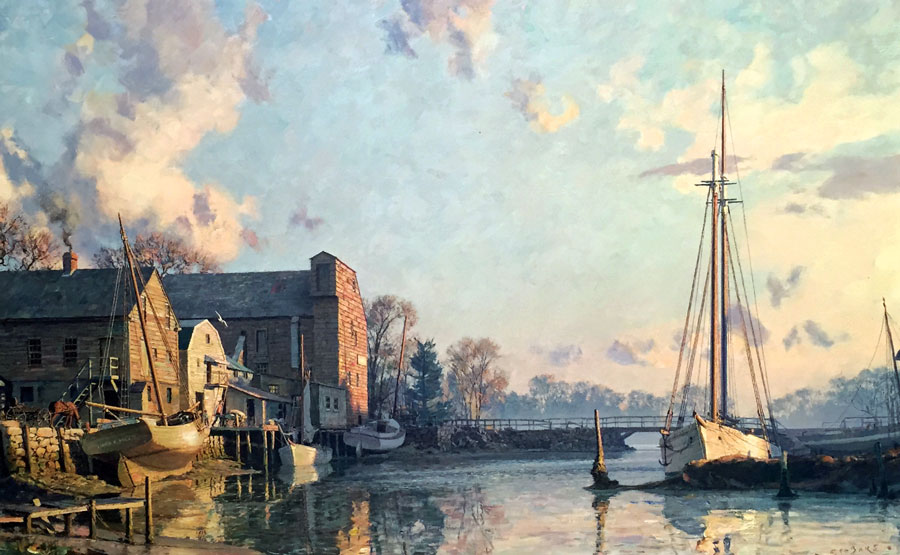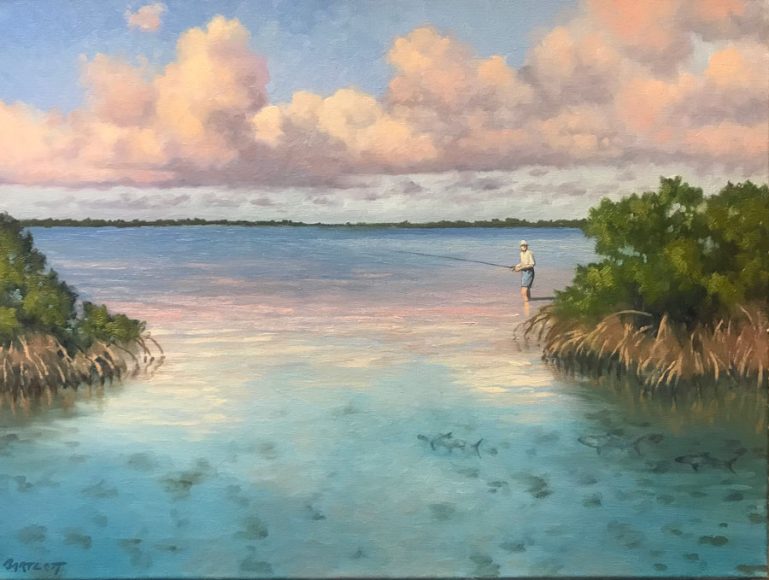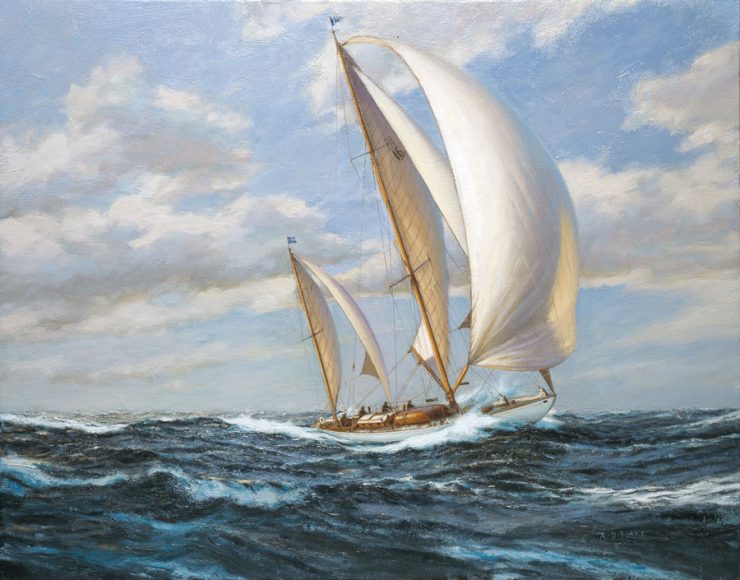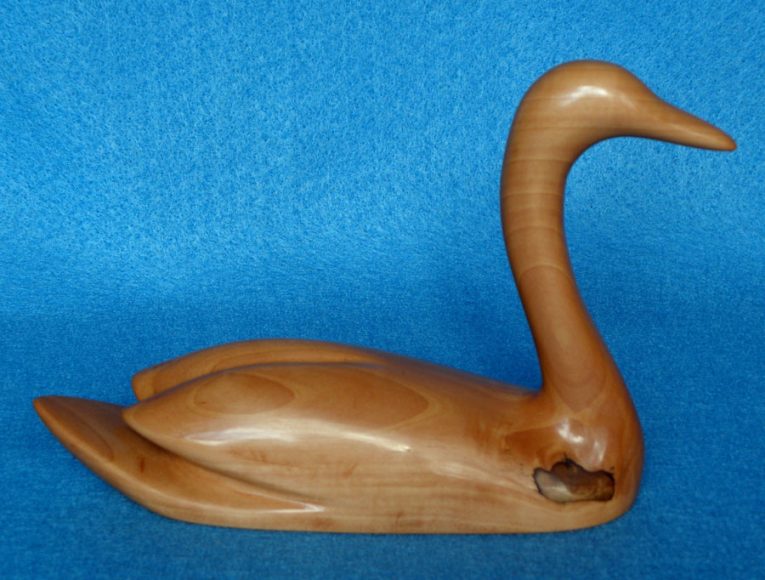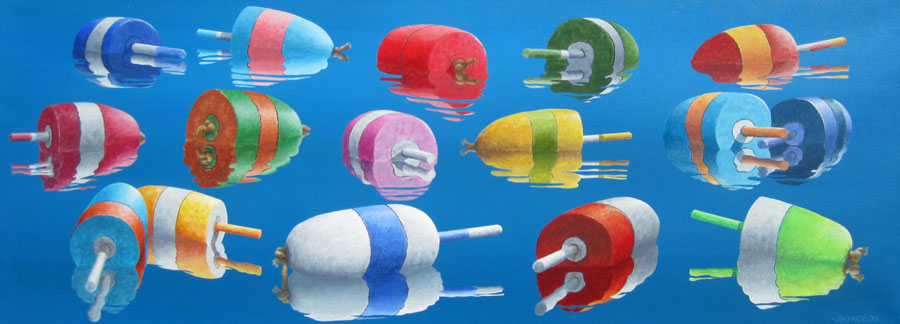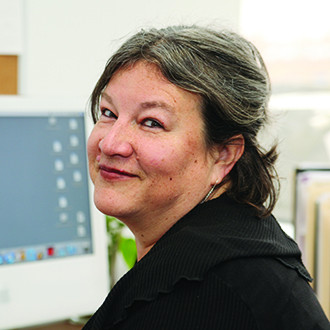In the midst of a commercial pocket tucked into a residential area of Fairfield — not a wave, sail or sea bird in sight — sits the J. Russell Jinishian Gallery of Marine and Sporting Art.
It’s housed in a former bank, an airy, high-ceilinged space ideal for the countless works of art on display. And these range from classic oil paintings of clipper ships to oversize ceramic shells, from bronze dolphins to acrylic works depicting buoys, from scrimshaws to insanely intricate ship models.
A visitor stands in awe of the array on a recent morning, as the veteran marine-art expert and dealer Jinishian breaks into a smile that lets you know he’s seen this reaction before.
“Well, if you like boats, you’re in the right place,” he says by way of warm welcome.
Relocating from downtown Fairfield, where he was for two decades, Jinishian has called this space home for some six years.
It’s clearly a destination, one that art collectors, sailing enthusiasts and interior designers alike continue to seek out in recognition of the enduring appeal of the gallery’s subject matter.
Design trends may come and go, but though a specialty, marine art has an avid following — and is a subject much broader than one might realize, Jinishian says.
“They think that,” he says, pointing to a particular work, “a clipper ship on the high seas. Today, it’s every aspect of being on the water or being by the water.”
Whether it’s a contemporary scene of a favorite Block Island shoreline or a ceramic starfish, Jinishian says, “all that falls under” the marine art category.
“I say ‘As long as it’s wet, we call it marine art.’ No. Just kidding,” he says with a laugh.
The category has, he shares, indeed broadened over his 30-plus years in the field, which explains the finely carved wooden goose or the sculpture of a sea otter floating on its back.
“People tend to buy things, because they like to look at them,” he adds.
From early days
Growing up in Old Greenwich, Jinishian was surrounded by “sailing and boating.”
He studied art history at the Sir John Cass School of Art, Architecture and Design in London and holds a Bachelor of Fine Arts degree from Cornell University.
Early career days found Jinishian serving as a program director for the Silvermine Guild of Artists in New Canaan.
“I was a young buck then,” he says with another laugh.
His experience would continue to bridge the art and marine worlds, and Jinishian would serve as the director of the Mystic Maritime Gallery at the Mystic Seaport Museum in Connecticut for more than 12 years. He was also an art columnist for the Connecticut Post newspaper, with work appearing in Art New England. He would eventually write “Bound for Blue Water,” a guide to contemporary marine art.
In 1995, Jinishian became the director of Big Horn Galleries in Fairfield. In 1997, he founded his own specialty gallery in a space right above Big Horn.
A testament to his dedication to the field, Jinishian is today on the advisory board of the National Maritime Historical Society, is a member of the New York Yacht Club and is an honorary member of the American Society of Marine Artists.
The gallery’s depth
The gallery features contemporary work from around the world, as well as classics from earlier days, all on consignment. An impromptu tour offers an introduction to the nearly 1,000 pieces in the inventory.
A showpiece is the Lloyd McCaffery (born 1949) scratch-built ship model of Britannia, a 1682 100-gun British ship. The work features a pear, apple, holly and lancewood with an English oak burl base. Jinishian offers a look through a magnifier — and the staggering detail reveals why it not only commands a six-figure price tag but also prompts Jinishian to proclaim the artist “the finest miniaturist of our time.”
Nearby stands an Andrew Wyeth 1947 watercolor called “Sea Birds” depicting a serene Cushing, Maine, scene. A work by contemporary British artist John Stobart takes us back to 1895 to a vaguely recognizable scene, one we learn is Cos Cob’s waterfront in Greenwich.
With his extensive network, Jinishian is able to source various works, commission art and advise collectors on selling work, as well.
“It’s a small group of people who are true collectors, who’d rather go to an art gallery than go to the beach on a hot summer day — but they do exist.”
Most often, he says, customers come to him when decorating or remodeling.
“They have a need to fill a space with something that reflects their interests or what they like.”
Some may collect yachting works such as the America’s Cup works on display, while others might be obsessed with tugboats, naval scenes or sea life.
“Everything you have reflects who you are,” Jinishian says.
And his offerings provide enough variety seemingly to fit any interior or budget.
“Here you can spend $200 or $200,000 — and everything in between,” Jinishian says. “Once people make art a part of their surroundings, there really is a lot of return on that.”
Beyond the sea
It all adds up to a virtual museum, one with a laid-back atmosphere where questions are welcomed, as when a visitor points to a collection of what turns out to be called half models or half-hull models.
Jinishian says they were originally used to help in boat design.
“They were usually carved by hand by a boat builder instead of being drawn out,” he says. “These days people are having them built of their own boat, as a decorative object.”
Jinishian features his work beyond the gallery walls, from an extensively detailed website to lectures on marine art and collecting to exhibitions. Last month, for example, the “Contemporary Masters of Marine Art” exhibition and sale at the Ocean House Resort in Watch Hill, Rhode Island, wrapped up. He has also participated in Marine Art Masters at the Riverside Yacht Club in Greenwich, while also showing at the Union League Club Art Gallery in Manhattan. Jinishian also has work on display at the Sportsman’s Palette Exhibition at Orvis Sandanona Shooting Grounds in Millbrook, New York, a nod to his related specialty of sporting art that includes fishing and hunting works. He also has published MarineArtNews, a specialty publication for collectors and historians.
Through it all, Jinishian has found his chosen focus maintains a special place in the art world.
“Something draws people to this subject matter. Sometimes it’s just the sheer beauty.”
Jinishian is quick to note that those working in the field are “really skilled artists,” as the genre can prove challenging.
“There’s a technical angle you’ve got to get right,” he says.
An artist not only has to capture the precise details of a ship but also have an eye for artfully depicting the water, the light and the natural elements to create a cohesive work.
In the end, it seems Jinishian sees his role as one of facilitator.
“I’ve really been trying to pass on information,” he says.
After all, he says, “There’s no Consumer Reports for art… My job is to help people understand it.”
J. Russell Jinishian Gallery is at 1899 Bronson Road in Fairfield. For more, visit jrusselljinishiangallery.com.

